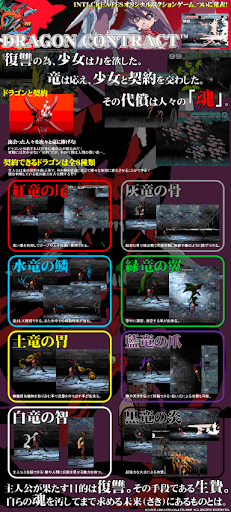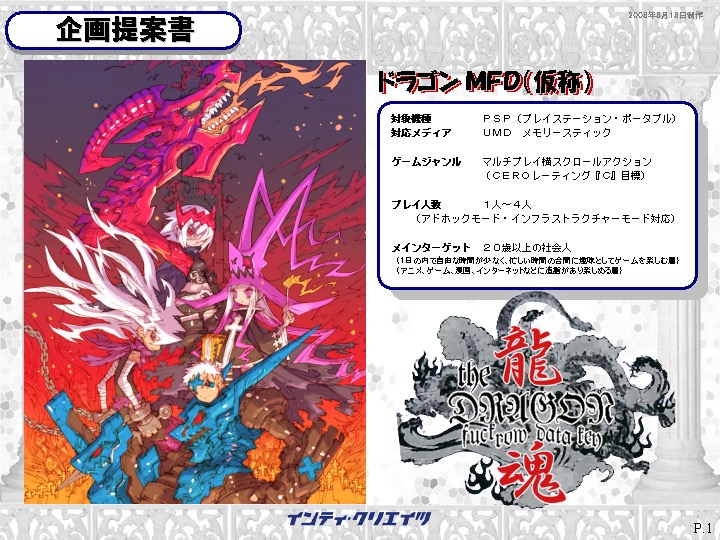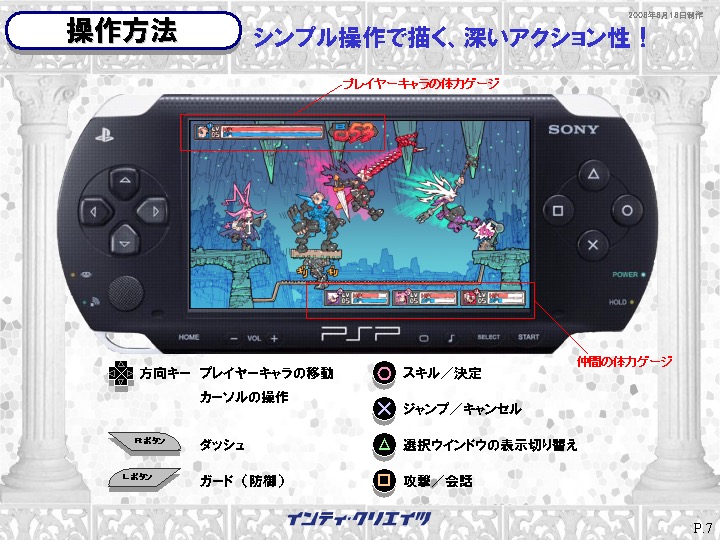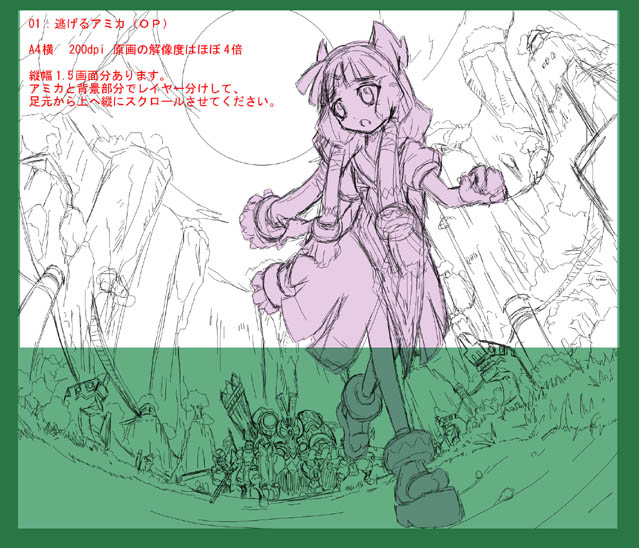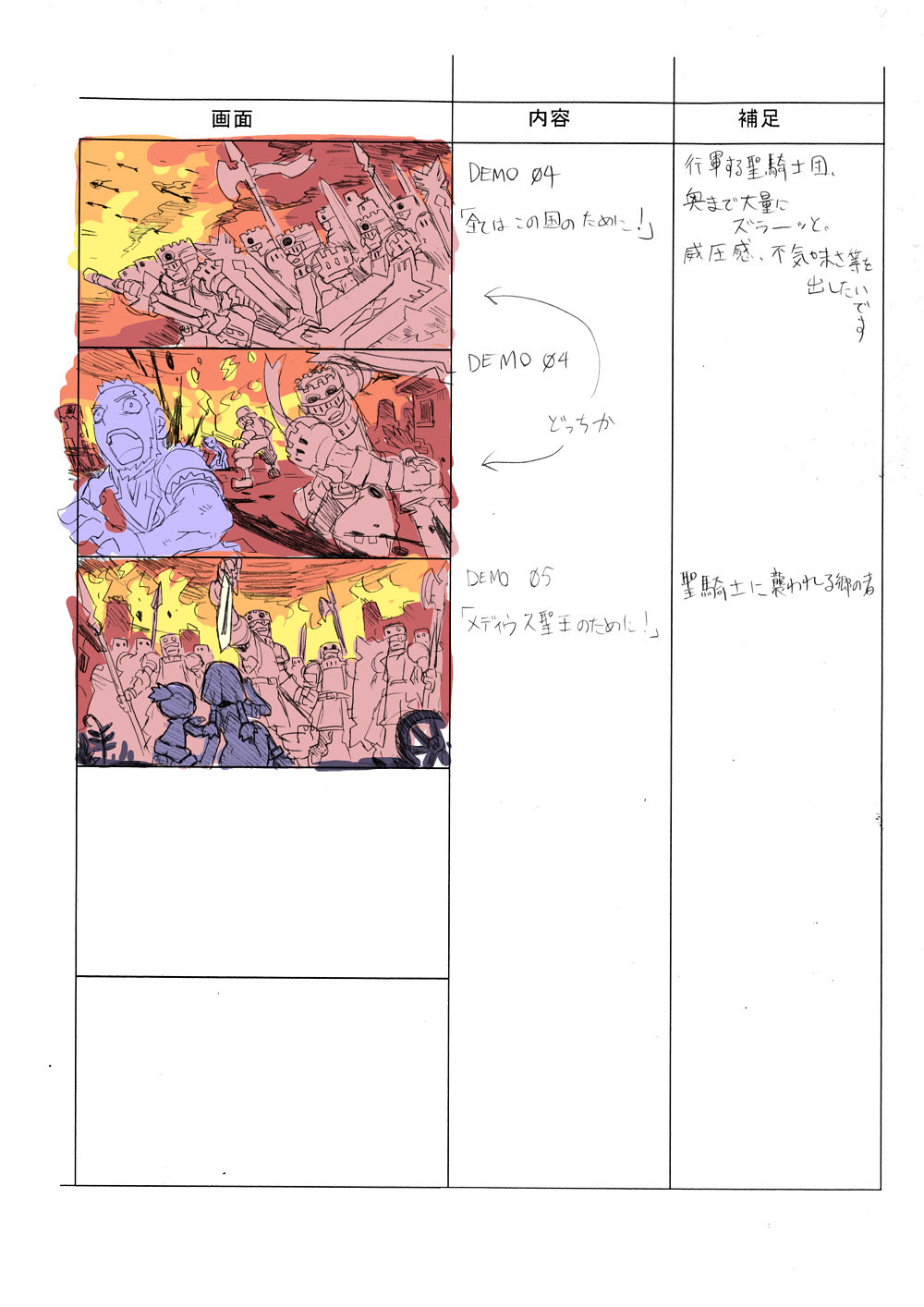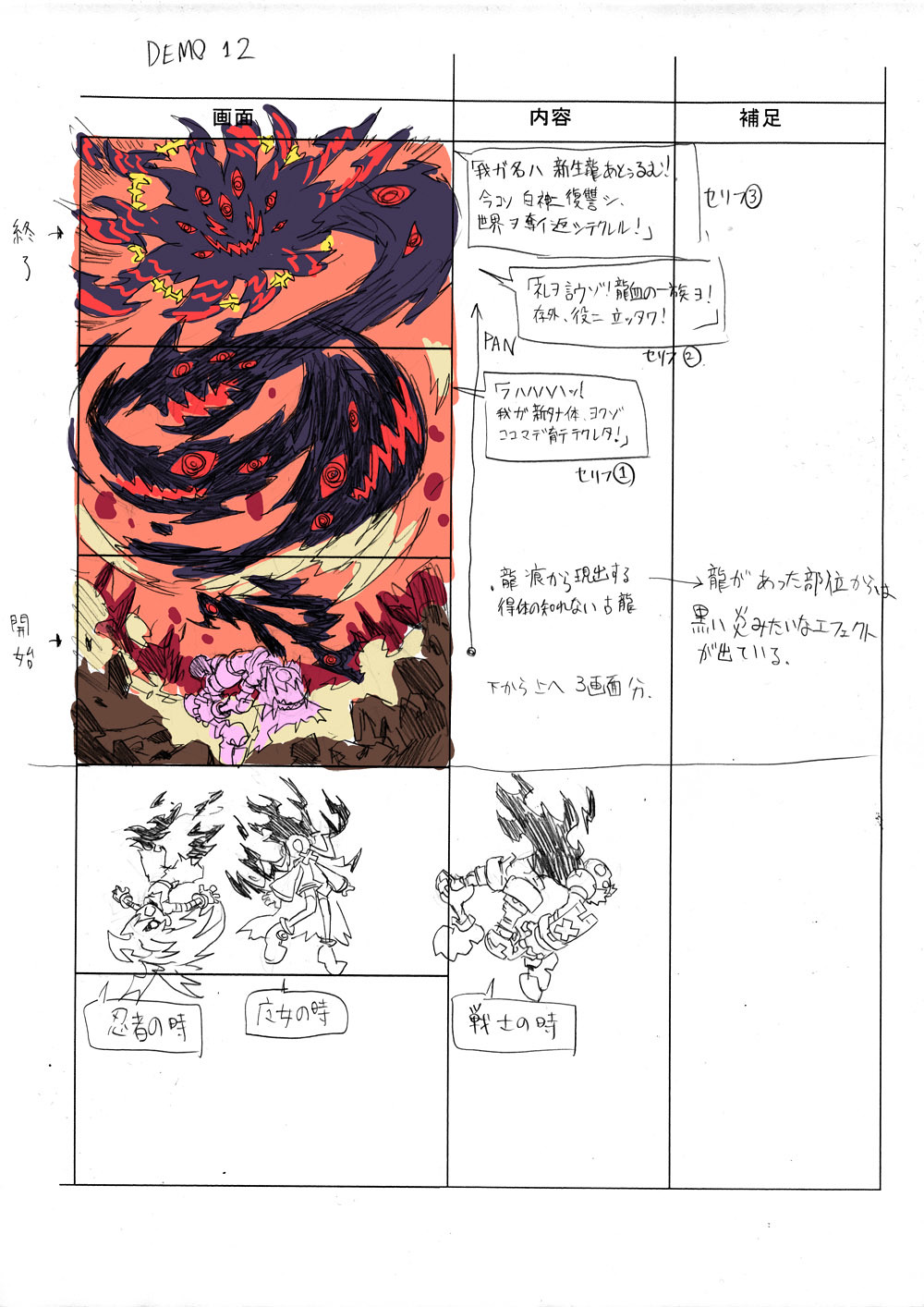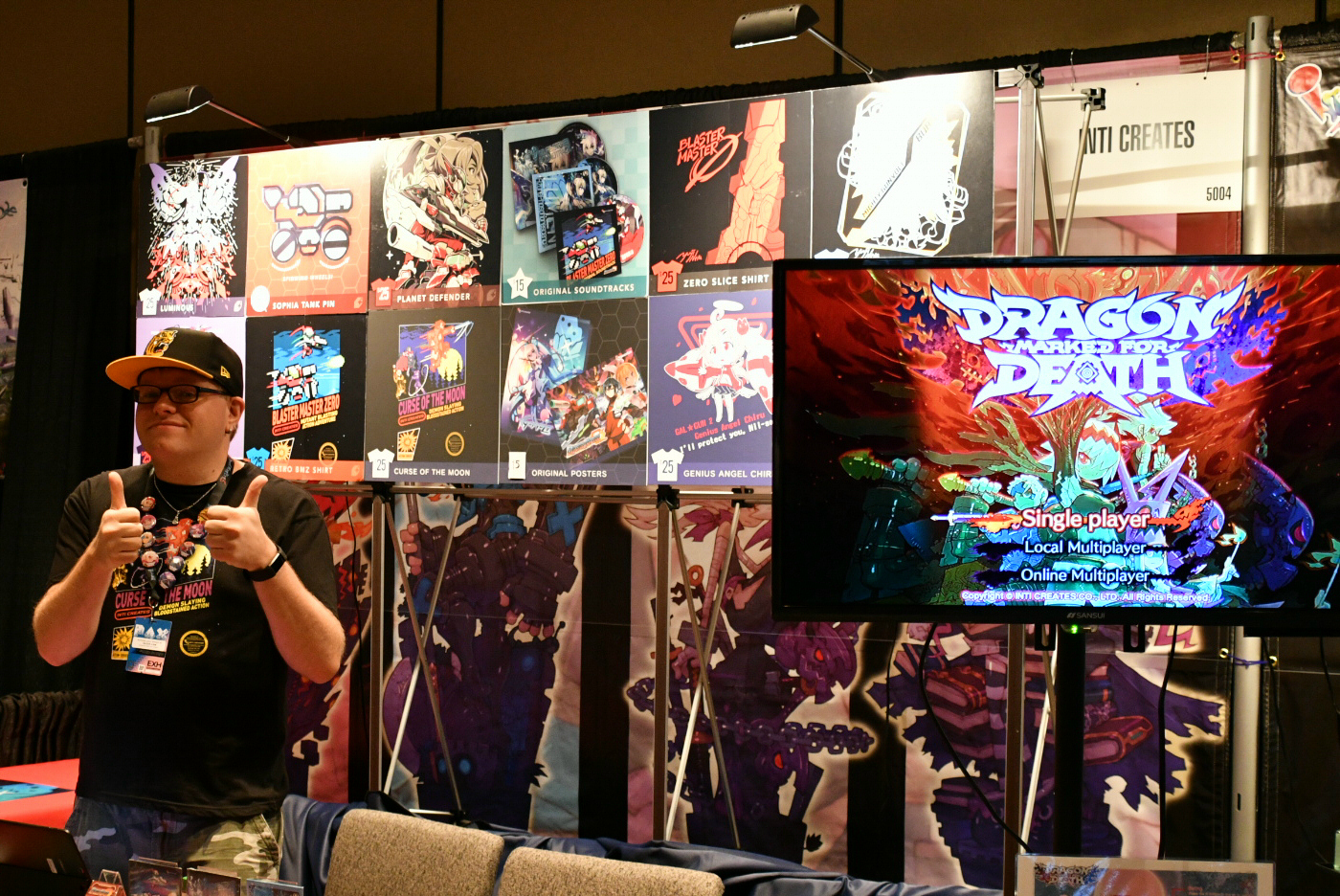With Dragon Marked for Death’s release on PlayStation 4, we here at Inti Creates thought it was about time to tell the story of this game’s storied development history. Dragon Marked for Death had been conceived many years before I ever stepped into my role at Inti Creates in 2014, so rather than take my word for it, I sat down the game’s director and producer, who have been in the fold with DMFD from the very beginning, to share their story with you. Enjoy!
Aizu: I’m Takuya Aizu, Dragon Marked for Death’s producer.
Ito: And I’m Ryota Ito, director on Dragon Marked for Death (which I’ll now refer to as “DMFD”).
Ito: Now, some of you may already be aware of this, but we actually began development on DMFD about 11 years ago.
Aizu: While it’s true that development did start 11 years ago, there was an even older design called “Dragon Contract” that was actually DMFD’s predecessor. After development ended on Mega Man Zero 4 (2005) and its sequel, Mega Man ZX (2006), those series’ main illustrator, Toru Nakayama, went to a new team inside the company. After that he worked together with Mega Man Zero creator Yoshihisa Tsuda and they wrote up a plan for a game called “Dragon Contract.”
Ito: When I was looking into DMFD’s development history, I discovered the design document for Dragon Contract and it was indeed written in 2006.
Aizu: To be honest, we actually released information about Dragon Contract one time. In 2007, we thought that releasing information on a real game as an April Fool’s joke might cause a stir, so we did exactly that with Dragon Contract.
Ito: The design for Dragon Contract had a lot in common with DMFD, but there were still some big differences.
Aizu: One main difference was that the game was designed as a fantasy-style Mega Man Zero with one main character that possessed a dragon arm that fired projectiles. He could enter a contract with eight different elder dragons and acquire new attacks by defeating enemy dragons.
Ito: Early designs for DMFD shared a system with Dragon Contract — “Sacrifice.” The protagonist could offer the souls of his allies to the elder dragons in exchange for power. Using the dragon’s power would cause these allies’ souls to slowly erode though, which eventually rendered them unable to talk.
Aizu: If you look at that first design document, the name “Dragon Contract” is written using the Japanese characters for “dragon” and “soul.” The fundamental idea for the game was forming a contract with a dragon in exchange for human souls.
Aizu: The original target platform in that first design document was the PSP, and we planned to use its ad hoc feature for local multiplayer. We took that document to many publishers, but only one expressed any interest. When all was said and done, we were thrilled to receive backing and monetary support from Yoshifumi Hashimoto of Marvelous and development got underway.
Ito: After talking it over with Marvelous, we decided to make the game multiplatform for PSP, PS3, and one other platform. We began development in earnest in 2009.
Aizu: Ryota Ito was appointed director, the setting design was entrusted to KOU (Makoto Yabe) of the Mega Man ZX series, and Mega Man Zero artist Hirokatsu Maeda took the lead on sprite design.
Ito: However, due to various circumstances at Marvelous, development was halted at the beginning of 2010 and that version of the game was unfortunately never released.
Aizu: Even then, Mr. Hashimoto was very fond of the project, and twice provided funds (in 2011 and 2012) to port the game to mobile platforms, allowing development to slowly continue. During this time, “Azure Striker Gunvolt” series illustrator Yoshitaka Hatakeyama contributed many illustrations for the game.
Ito: A lot of time passed before we were finally able to restart the development of DMFD. We got things back up and running about four years ago (2016), and if I remember correctly, it took another year after that for it to get into full swing.
Aizu: In order to completely restart development, we needed to have Inti Creates self-publish the game and take on the full financial burden. We were able to do this thanks to strong worldwide sales of the Gunvolt series helmed by Mr. Tsuda, which helped convince Marvelous to give us the OK. We have our fans to thank as well, because it wouldn’t have been possible without their support.
Ito: Since the game was on hold for a long time, many of the people on the DMFD team had really hard to get an idea of just how close to completion the game even was.
Aizu: It was definitely a challenge. However, the main programmer of Mega Man ZX returned to the company after going freelance for a while and a multiplayer specialist programmer left a certain Osaka-based “C” company to join our team. With these folks on board, I felt that our newly powered-up team was up to the task.
Ito: It’s good for the producer to be optimistic, but as director, when I first touched that old build of DMFD, the gameplay felt really outdated and I knew it was going to be a major task to modernize it. The only character with a dash was the Shinobi — everyone else could only walk — and the swords and axe attacks were very slow. Compared to other Inti Creates games, it just didn’t feel good; the pace was slow and it took too long to defeat enemies.
Aizu: It really was slow.
Ito: It took between 30 and 60 minutes just to clear a quest, and I won’t deny that the gameplay itself was quite simple and dull. When we exhibited DMFD at PAX West three years ago, we tried to improve the gameplay a bit by streamlining the quest in the demo. We didn’t have time to change the characters much however, and anyone who played it then may have left with the impression that it was quite a slow game overall.
Ito: In order to dramatically improve the character action, we brought Bloodstained: Curse of the Moon director Miyazawa “Meijin” onto the team.
Aizu: He had actually worked on DMFD 11 years prior creating graphics, but since that time he had proved himself as a planner and now contributes to a variety of Inti Creates games.
Ito: He took a fresh look at each character’s gameplay and adjusted them all from the ground up to create the speedy and satisfying action of the game today. Thanks to him, DMFD’s gameplay would feel at home with the high-speed action of games like Mega Man Zero and Gunvolt.
Aizu: We were developing Bloodstained: Curse of the Moon 2 at the same time as we were making updates to DMFD. That must have been a real challenge for him.
Ito: DMFD isn’t all action, but also an RPG where characters’ levels and stats matter. It would be very difficult for players to play through it just like any other action game. Cooperating and working as a team in online multiplayer is a key aspect to the game as well, so we hope everyone gets a chance to experience the unique gameplay of DMFD together.
Aizu: Countless people have worked on DMFD during the past decade. We are extremely proud to bring the latest version of DMFD to PS4 in what we feel is the ultimate form of the game. We hope you enjoy the game!







